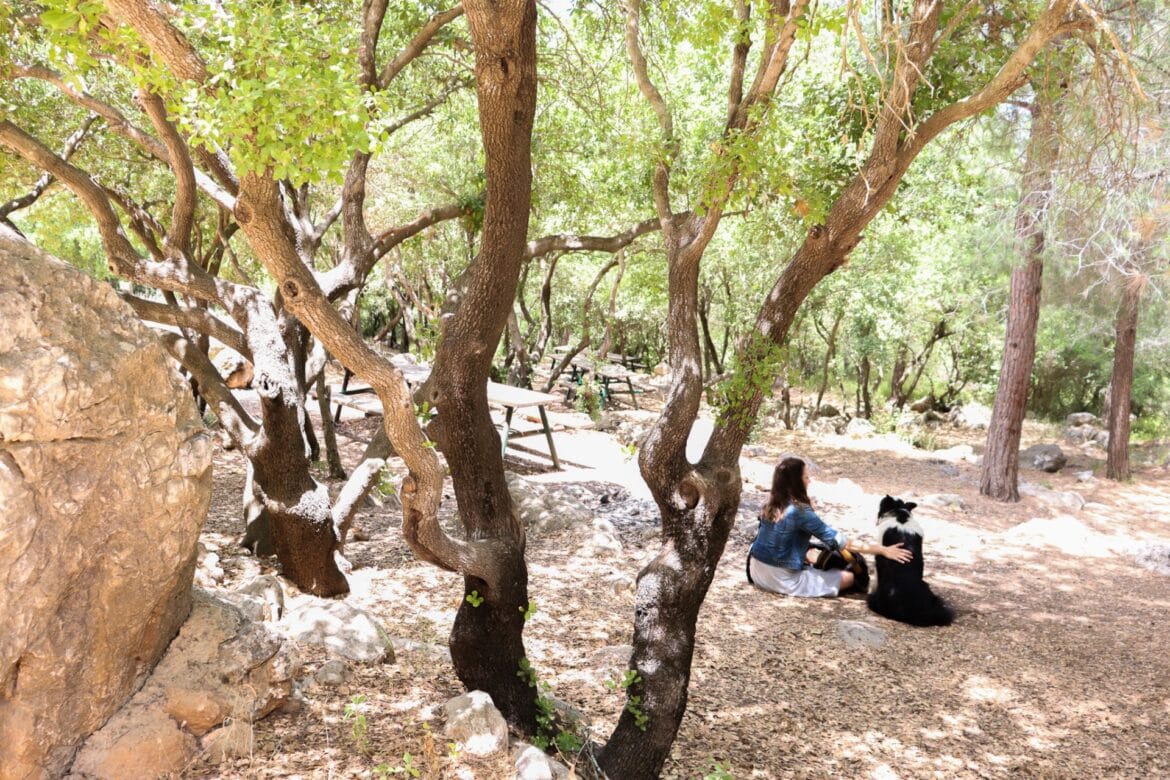
| Trail Map | ||
| Distance: One Way - 3km Round trip- 6.5km | Time: 2-4 hours | Difficulty: Moderate |
| Ascent: 423m |
Click here to go straight to hike notes.
Israel. It’s home to many natural wonders, from giant craters to salt lakes. In the Jerusalem Mountains near Beit Shemesh, visitors flock to one of the coolest natural wonders in the country: a vast stalactite and stalagmite cave called Maarat HaNetifim.
At the Stalactite Cave, water has been seeping through soft limestone for thousands of years, creating a series of icicle type formations. There are so many interesting stalactites and stalagmites at Maarat HaNetifim that the parks workers have even taken to naming them. There’s Snow White and the Seven Dwarves, Romeo and Juliet, and even the Capital Building.
Usually, the Stalactite Cave is visited as a solo attraction. But I’ve always wanted to hike to the cave to get a feel for its true location in the terrain of the natural world.

We finally got around to hiking to Maarat HaNetifim last Friday, along an off-the-beaten track trail that truly intrepid hikers will love. The hike itself was really spectacular, especially on that unseasonably cool and cloudy summer day.
On the trail, we experienced lush mountain scenery and got a new perspective on some the area’s natural landmarks. Here’s how we hiked it:
Old Friends
The trail began at an enchanting picnic area on Har Yaale, one of our favorite family-friendly hiking spots.
It’s impossible not to pause to take in the scenery at this “Relaxation Glen.” Tall trees join together to form a giant, shady canopy. Each picnic table between the trees sits on its own little carpet of golden leaves and pine needles. As the name suggests, it’s a great place to relax.

We continued along on the blue trail, still shady and cool in the early morning sunshine. Soon, we reached a familiar crossroads to the black trail. And instead of continuing on the blue trail as we usually do, we headed down the black trail.
Pinch Me, I’m Dreaming
As we climbed down the side of the mountain, a world of lush mountains appeared before us. Rolling hills, covered in green, towered above a verdant valley below.

Even well past the rainy season, this area remains green (as opposed to some of the other local scenery). That’s because of the Sorek River which runs from the Jerusalem Mountains all the way to the sea.
The Sorek River may not be so nice for swimming (the water isn’t safe for bathing), but it sure does turn typically dry scenery into something spectacular.
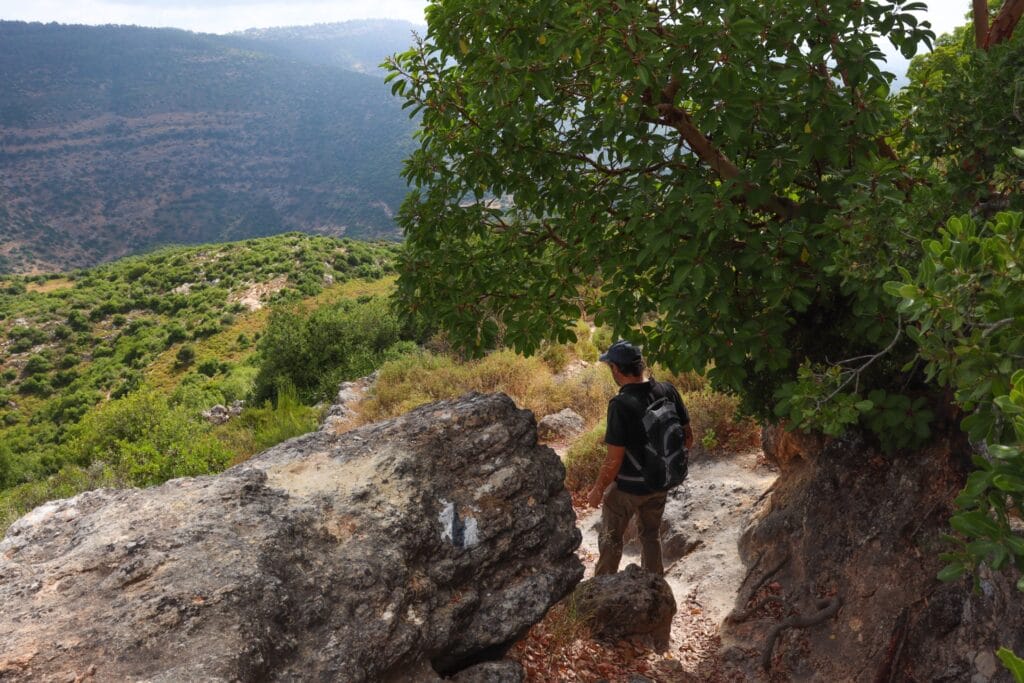
While we walked, the clouds rolled in creating a thick mist on top of the mountains. We could see the remains of what looked like a crumbling castle on top of a little hill in the distance. It felt like we were in the pages of a medieval storybook.
Back to Reality
The black trail was beautiful, but if we wanted to get to Maarat HaNetifim, we would have to locate the red trail and change our course. We kept our eyes peeled along the descent and found the trail, barely visible, veering off to the side.


After a few minutes of walking, I could see why the red trail was so poorly marked. Although there were trail markers at regular intervals, the trail was not well maintained. Thorny bushes poked out of the sides. And in some places, part of the trail had been washed away by winter rains.
This was fine with us. With long pants and careful maneuvering, we were happy to enjoy a trail that was a bit more off the beaten track than usual. It gave us a chance to exercise our skills at negotiating wilder terrain.

Even with the overpouring of greenery onto the trail, it wasn’t very shady. Since we were on the side of a mountain, the morning sun was shining upon us from the east.
Keeping Up with the Scenery
On one side, the views looked out upon green mountains and a lush valley. On the other, we could see the city of Beit Shemesh, white buildings in a pool of light.

We saw several caves across the valley in the distance. Pretty soon, we located one of our favorite local spots on the mountain across the way: Maarat Shimshon.
After maneuvering the red trail for a while, we were ready to stop for a break. We searched for a shady, open space to sit. But in that particular stretch of trail, we couldn’t find anything.
No matter. Since this was such a clearly quiet trail, we sat down right in the middle of it, between a shady oak tree and some shrubbery. It was peaceful, and quiet, and just perfect.
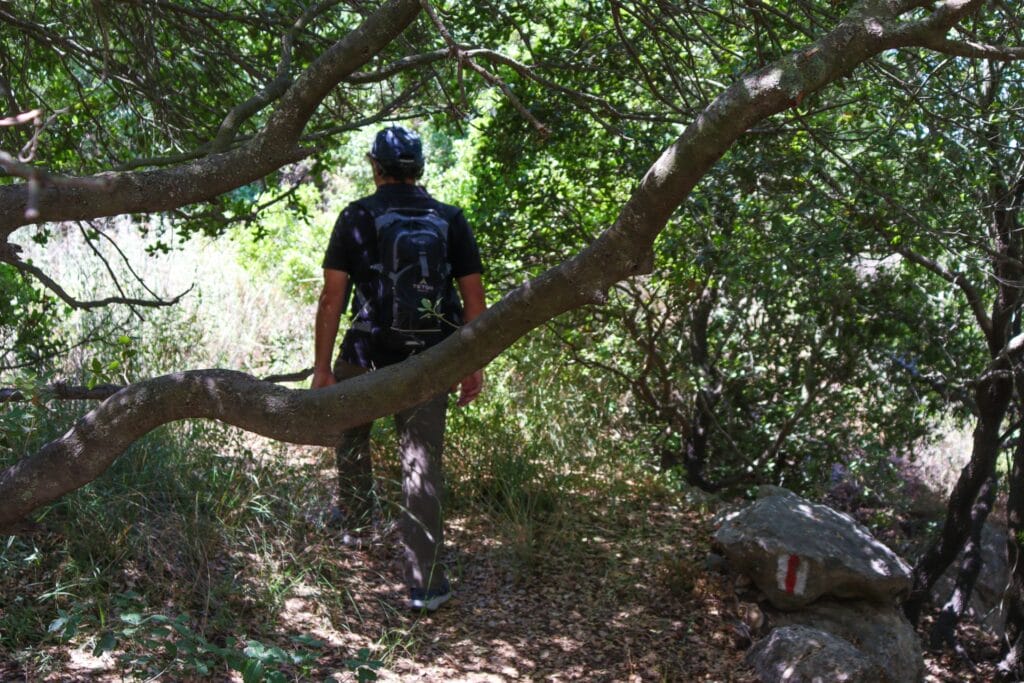
Emerging into Civilization
After a break, we were back at it, walking through patches of sun and shade, between thick bushes and over open areas. Then, we were ascending again, over a large, flat rock and into the sunshine. We could see Maarat HaNetifim just up ahead.
It was totally quiet at the Stalactite Cave. That’s because on the day we went, it was closed (which we knew before we got there). Soon, it would be opening up again, to be filled with the noise of families and tour groups, all eager to get a glimpse of the cool interior of the cave.

For now, we thought it was really neat to see the National Park with no one else around. It was actually quite pretty, even from the outside. For the first time, I noticed the spectacular views from the lookout up top.
Down a Country Highway
We had two options for the return trip. Either we could go back the way we came (boring!), or we could walk down a road and hop back on the blue trail further along.
While a road didn’t sound particularly appealing, it did have the advantage of being empty that day. We chose the road and enjoyed a smooth walk in the sunshine. Before long, we were back on the blue trail, weaving our way around Har Yaale and back towards the picnic area at the start of the trail.
There’s something special about seeing your old haunts from a fresh perspective. This walk to Maarat HaNetifim gave me a new understanding of the natural world in our local area.


Hikers’ Notes:
Great news! The Stalactite Cave is open for business again. Get your tickets here.
Here’s what you need to know to hike to the Stalactite Cave:
- This trail is best suited to cooler days in fall, winter, and spring. It’s hot there in the summertime! Wear a hat, sunglasses, sunscreen, and bring ice water if you hike it in the summer.
- Hike this as a one way trail (Stalactite Cave Parking is in the table up top), or make it a circular hike like we did.
- No dogs allowed at the Stalactite Cave itself.
- The red trail is not well maintained. Wear hiking boots, long pants, and be prepared for mud in the wintertime and thorns in the summertime.
- To follow the path: Begin by following the blue trail. Pass one black trail. Make a right at the second black trail crossroads (by the wooden sign post). A few hundred meters into the black trail, look for a red trail marker on the ground (see trail marker gallery and use Google Earth file to locate). Follow the red trail to Maarat HaNetifim. Return the same way, or follow the highway until you see a blue trail. You can turn left when you see the blue trail and follow it back to your car.
- Entrance to Maarat HeNetifim with admission fee or for Parks Card members. There are facilities on site, with a store and tours.
Don’t forget to read my guide to the navigational features in this post before you hit the trail.
Click here to read about a trip to the Stalactite Cave itself.
Trail map from Amud Anan.
Questions? Have you hiked this trail? Let’s hear about it in the comments.
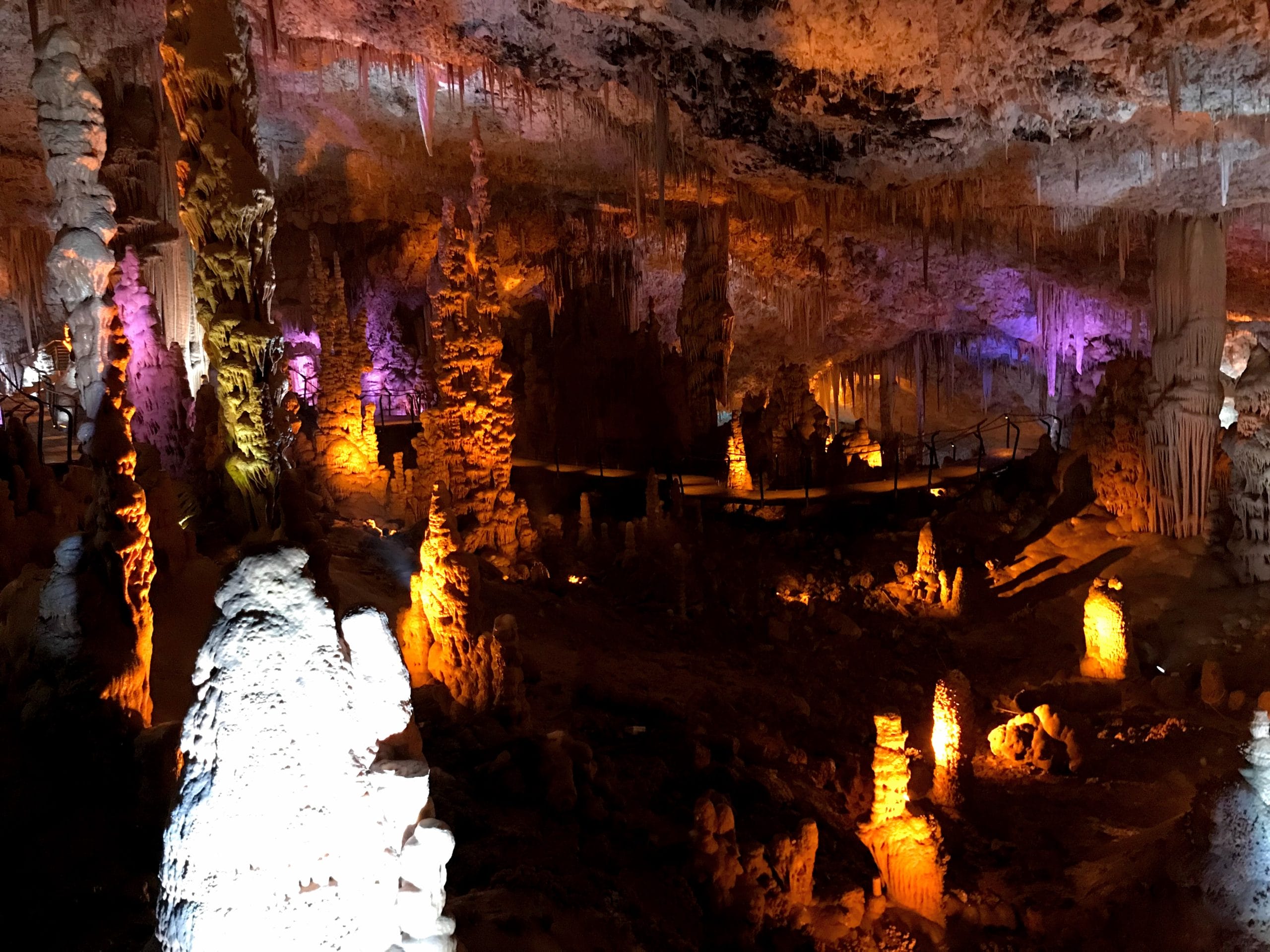
FAQ
At the Nature Reserve, you can actually go inside the cave to see the largest and most diverse array of stalactites and stalagmites in all of Israel.
Yes, there’s an entrance fee to get in. You can also sign up for a parks card to get a full year of access to all of the National Parks in Israel. Otherwise, entrance is 28 shekel for adults and 14 shekel for children.
Entrance to the cave is by tour only. Before the tour, you’ll get a brief explanation of the area and the cave. During the tour itself, the guide will explain the formation of the stalactites, the discovery of the cave, and point out extra special stalactite formations.
Yes. Tours in English are held Sunday–Thursday 11 A.M., 4 P.M.; Friday: 11 A.M. 3 P.M. During winter hours – Sunday–Thursday 11 A.M., 3 P.M.; Friday: 11 A.M. 2 P.M.
Yes! If you follow our trail map, you can take a hike through the Jerusalem Mountains and finish off with a visit to the stalactite cave. This short hike is for good hikers only, who don’t mind rough trails.

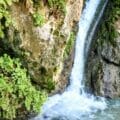

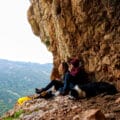

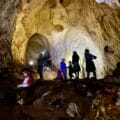
The way back was done on the same trail you came down on?
Nope, but you could also go straight back the way you came. See trail map in the table at the top of the page.